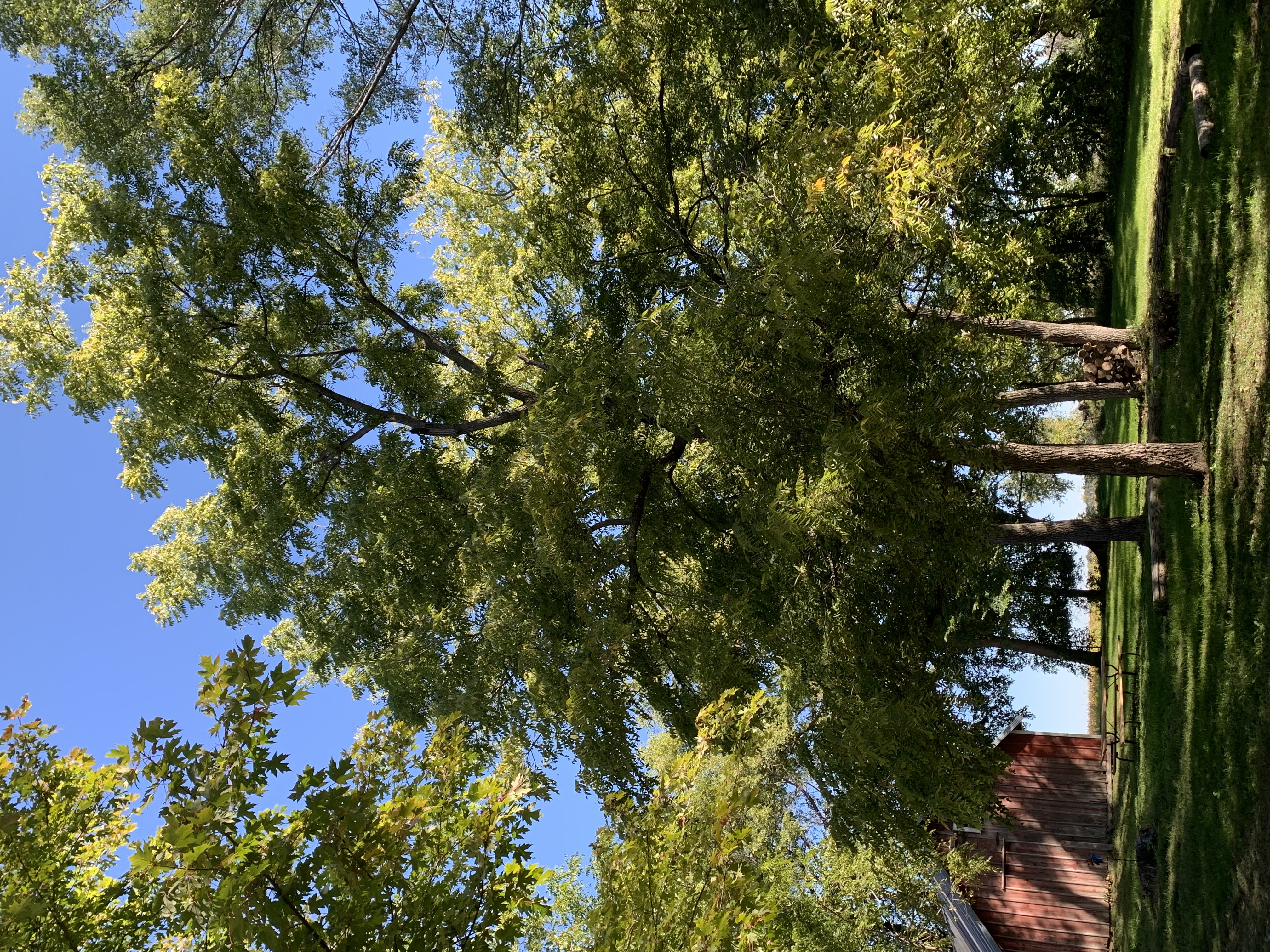Black Walnuts
Fall has arrived on this early October day. Standing in the yard I hear several walnuts tumbling through the branches and plopping softly in the duff of fallen leaves and grass beneath the tree. As I walk through the yard, they squish and squirm beneath my feet. Owl Acres is studded with black walnut trees, now dropping their bounty for the squirrels, and for us if we choose to harvest them. I love the taste of black walnuts, in fudge and cookies and divinity candy. So, it’s time to get the wheelbarrow out and fill it with the nuts.
The scientific name for the native American black walnut is Juglans Nigre. The name is derived from combining Jupiter, king of the gods, and glans meaning nut. Nigre is just Latin for black.
Aptly named the king of nuts, The black walnut ranges from Canada to Mexico and from the Atlantic to the Rockies. It typically grows from 60 to 90 feet tall either in mixed forest or in open spaces. Its average life span is about 150 years, during which time it is generally disease-free. Its wood is close-grained, easy to work and very durable. It makes beautiful furniture, and mature black walnut trees are prized, and sometimes poached, for their wood. Today, an average walnut tree might sell for $700 to $800 for its lumber. If it’s veneer quality, the price goes up dramatically. This rich brown hard wood also made excellent fence posts, door sills and shingles for early settlers because of its resistance to decay. One property of the wood, its shock-absorbency, made it prized for gun stocks up through World War II.
The bark, leaves and husks have been used for centuries by native Americans for a variety of medicinal properties. The leaves and husks are full of tannins, which help fight infection and reduce swelling. Tinctures and powders were used for a host of other ailments including headache, ringworm, athlete’s foot, toothache, and as a laxative. Its bark has also been used to make black and brown dyes by both Native Americans and early settlers. And the nuts provided an excellent source of protein and nutrients.
Owl Acres has plenty of black walnut trees. They stand in the fence rows and in the lawn. Seedlings sprout where the mower doesn’t go. They are hardy, determined trees, growing slowly and purposefully into their maturity, offering shade but protecting their space to keep interlopers at bay. They leaf out late in the spring, work hard for a few months and then start dropping their magnificent load of black walnuts. The nuts they drop are encased in a thick husk that cushions their fall. Inside the husk is a very hard round nut that takes a special nutcracker or a hammer to open. The squirrels, lacking such implements, just use their teeth to drill holes in the shell. They eat well through the winter thanks to the abundance of these trees.
The black walnut has gone to great lengths to maintain its space and to discourage crowding by other plants. It produces a herbicide called juglone which is carried throughout its root system. The root system, as in most trees, is at least as broad underground as the branches above. The juglone keeps the understory clear of interlopers. This substance is also in its leaves and the husks of its nuts, so when they fall, they add to the protective duff under the tree. For this reason, planting gardens near black walnut trees can be very disappointing. The juglone will stunt the growth or kill Tomatoes, potatoes, eggplants, peppers, apples, pears, berries, and some landscape plants such as rhododendrons, azaleas, and lilacs. if they’re planted within the dripline of the tree, which is usually about a 50-foot radius all around it.
It seems that whatever nature produces, such as a crop of black walnuts, something has evolved to eat it. That thick green husk that surrounds each nut can’t be left to go to waste. Enter the walnut husk fly. I first encountered walnut husk flies in their larval form. I was working on getting the husks off of the walnuts so I could crack them, and discovered that many of the nuts had thick and soft husks—easy to remove at that point. But when I opened the husks, I found them full of maggots. The maggots are considered pests by walnut growers because they can stain the nuts if they invade the husks in later stages of development, and if they get an early start, they can also adversely affect the quality of the nutmeats. They’re happy to eat peaches and apricots which doesn’t endear them to fruit farmers, either.
These flies emerge as adults in mid-summer and get busy mating and laying eggs. They lay the eggs by punching tiny holes in the husks while they’re still on the tree, depositing about 15 eggs into the flesh of the husk. In five or so days, the larvae hatch from the eggs and start chowing down on the husk, spreading black goo as they go. As these quarter-inch long little white maggots mature, they turn yellow and acquire black mouthparts. After three to five weeks of feasting, the larvae drop to the ground or squirm out of husks on the ground, and burrow several inches into the dirt where they will pupate and spend the winter waiting for next summer.
Meanwhile, after the green husks fall off with the help of the husk flies, the squirrels, the mice, and the humans gather the hard round nuts and stash them for winter. I have a bucket full that I plan to use in Christmas fudge.
Photo by Author

1 comment